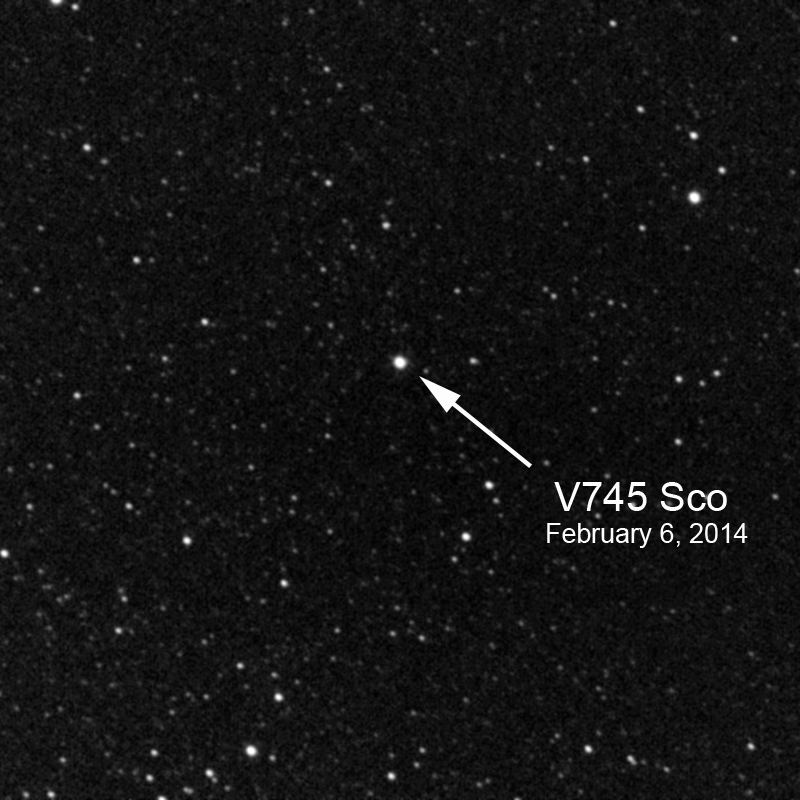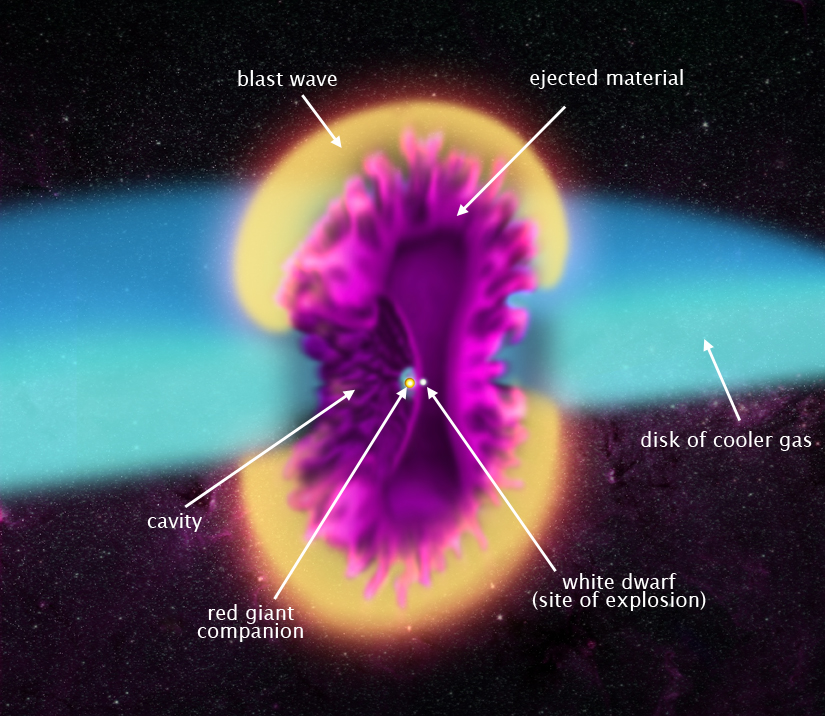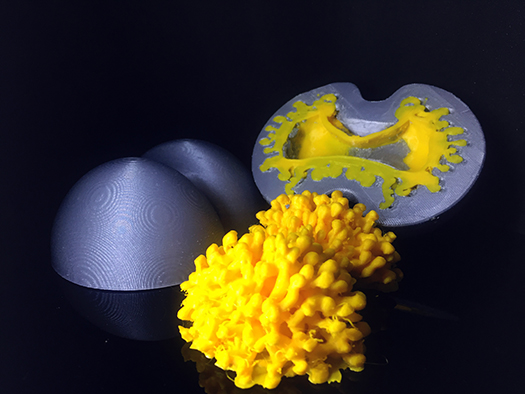Stellar Duo's Spectacular Explosive Dance Illuminated Via 3D-Printed Model
To understand the explosive dance between two stars in a close orbit, researchers turned to a 3D model — and even 3D printed it to get a more intuitive view.
The double-star system V745 Sco is about 25,000 light-years from Earth, and consists of a big, aging red giant star and a small stellar core called a white dwarf. As they orbit each other, material from the red giant is pulled toward the white dwarf and falls onto its surface, eventually igniting bright nova explosions. In 2014, researchers spotted the system fading to 1/1000th of its brightness in optical light as an explosion died down. The blast was equivalent to about 10 million trillion hydrogen bombs, according to the new study's authors.
"Astronomers were caught by surprise when previous outbursts from this system were seen in 1937 and 1989," representatives from Chandra X-ray Observatory said in a Sept. 18 statement. "When the system erupted on Feb. 6, 2014, however, scientists were ready to observe the event with a suite of telescopes including the Chandra X-ray Observatory." [The X-Ray Universe in Pictures by the Chandra Observatory]

Analyzing the data, the astronomers saw something unexpected: Based on the X-rays flying out of the blast, it looked like most of the ejected material was headed in Earth's direction, rather than evenly outward, according to the statement.
Researchers from the Palermo Astronomical Observatory and University of Palermo, both in Italy, and the Harvard-Smithsonian Center for Astrophysics in Massachusetts built a 3D model of the explosion to try to understand the blast.
That model suggested that a large disk of cool gas around the pair's equator, released as the white dwarf pulled on gas flowing from the red giant, helped shape the blast of material to concentrate upward and downward. The interaction also produced an expanding ring of hot, X-ray-emitting gas, according to the statement, but the X-rays emitted by material moving away from Earth were blocked by the material moving toward it — creating the illusion that all the material was moving forward.

The researchers also found that not that much mass was released compared to the total needed to trigger an explosion, which means the system can continue to create the explosions and accumulate material — eventually, if enough builds up, the white dwarf could undergo a large- enough explosion to be destroyed in a Type Ia supernova.
Get the Space.com Newsletter
Breaking space news, the latest updates on rocket launches, skywatching events and more!
A 3D-printed version of the model offered a tactile view of the blast wave, seen in gray, and the ejected material, shown in yellow.

The new work was detailed Feb. 1 in the journal Monthly Notices of the Royal Astronomical Society.
Email Sarah Lewin at slewin@space.com or follow her @SarahExplains. Follow us @Spacedotcom, Facebook and Google+. Original article on Space.com.
Join our Space Forums to keep talking space on the latest missions, night sky and more! And if you have a news tip, correction or comment, let us know at: community@space.com.

Sarah Lewin started writing for Space.com in June of 2015 as a Staff Writer and became Associate Editor in 2019 . Her work has been featured by Scientific American, IEEE Spectrum, Quanta Magazine, Wired, The Scientist, Science Friday and WGBH's Inside NOVA. Sarah has an MA from NYU's Science, Health and Environmental Reporting Program and an AB in mathematics from Brown University. When not writing, reading or thinking about space, Sarah enjoys musical theatre and mathematical papercraft. She is currently Assistant News Editor at Scientific American. You can follow her on Twitter @SarahExplains.









